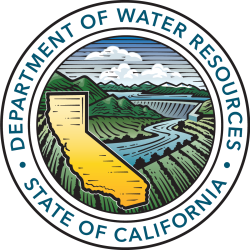WATER BANK PUBLIC ENGAGEMENT
The Regional Water Authority is engaging the public in a discussion about how water banking could expand and operate in the Sacramento region.
The goal of the Water Bank public engagement process is to share information, answer questions and gather input through a series of public meetings, called Stakeholder Forums.
QUICK REFERENCE (Click to access documents/learn more)
Recording Available from the Water Bank Stakeholder Forum #4 (Feb. 4, 2025) – materials from earlier forums are also available below
Water Bank 2024 Progress Recap and 2025 Outlook
Key Document: Goal, Objectives, Principles, and Constraints
Key Document: Governance: Organizational Framework, Functions, and Associated Roles and Responsibilities
Latest News: Water Bank environmental process

WATER BANK Q&A CONNECT
The Water Bank Program Team is addressing questions provided by stakeholders. Questions may include those from a single stakeholder, or the Program Team may combine similar questions and provide comprehensive answers about the Water Bank. Questions and answers are posted here on this page. Additional questions may be submitted to the Water Bank program.
Email questions to waterbankinfo@rwah2o.org.
You can find questions from previous weeks here.
Theme: How the Water Bank supports the Healthy Rivers and Landscapes Program
Question: What is the relationship between the Sacramento Regional Water Bank and the Healthy Rivers and Landscapes Program?
The Healthy Rivers and Landscapes (HR&L) Program is a collaborative effort by state, federal, and local agencies to enhance river flows, restore aquatic ecosystems, and improve water supply reliability across California. This program aims to provide definitive actions to improve conditions in various tributaries to the Sacramento and San Joaquin Rivers and the Bay Delta.
The American River Region Draft Implementation Agreement[1] (Agreement) defines the flows and processes local agencies will abide by to enhance river flows and seek the other objectives of the HR&L Program on the American River. Specifically, the American River Agreement aims to improve conditions for wild, native fall-run Chinook salmon and steelhead trout (salmonids) in the Lower American River, maintain water supply reliability, and support the Delta ecosystem.
The Sacramento Regional Water Bank (Water Bank) is crucial to providing the water flows during dry and critically dry years outlined in the Agreement.
Upper watershed water providers, including the Placer County Water Agency, El Dorado Irrigation District, Georgetown Divide Public Utility District (PUD), and Foresthill PUD, will contribute flows in above-normal and below-normal years. The Water Bank, however, will supply 30,000 acre-feet of water from groundwater resources in critical years. An additional 10,000 acre-feet will come from the Water Bank, upper watershed providers, or both in dry years.
The Water Bank can assist with the delivery of these flows even in the driest years by strategically utilizing existing and new infrastructure to contribute to flows in the Lower American River and Delta. During dry periods, the Water Bank shifts to groundwater use, allowing more surface water to remain in the rivers, benefiting fish. Early in these dry years, Reclamation will pulse flows from March through May, and the Water Bank will replenish these flows, creating a healthier river environment for salmonids because the spring flows will be greater than they would be without the HR&L.
Maintaining adequate cold water flows is another of the Water Bank’s potential contributions. Cold water is essential for the survival of salmon and steelhead when they are using the river for spawning and rearing.
One of the key goals of the HR&L Program is to enhance river conditions not just by increasing water availability but by delivering water at the right time and temperature. The Water Bank plays an important role in providing the mix of water conditions needed to meet these broader environmental goals.
A key aspect of the American River Agreement negotiations involved investment in the Water Bank. By providing flows during critical and dry years, the state is investing in local groundwater infrastructure to help the bank meet its goals. This collaboration allows for the strategic release of water during key periods, supporting optimal conditions for salmon and steelhead.
Overall, the Water Bank’s contributions create a more stable and supportive environment for salmon and steelhead in the Lower American River and Delta. It helps to ensure adequate water flows and maintain cold water conditions and supports habitat enhancement efforts.
Supporting Habitat Enhancement on the Lower American River
Supporting habitat enhancement on the Lower American River is a key focus of local water providers collaborating through the Water Forum for over 20 years. Water Forum members commit to coequal objectives: Provide a reliable and safe water supply for the region’s economic health and planned development through to the year 2030; and Preserve the Lower American River’s fishery, wildlife, recreational, and aesthetic values.
The Water Bank’s contributions complement the Water Forum’s ongoing habitat enhancement projects in the Lower American River. These include creating and improving spawning and rearing habitats vital for wild salmon and steelhead reproduction and growth. The increased availability of water at critical times of year would help ensure these habitats are adequately inundated and functional. The Water Bank assists this process by providing HR&L spring pulses allowing them to flow across habitat constructed and enhanced by the Water Forum. The use of enhanced habitats by spawning fish has increased significantly at multiple sites relative to pre-restoration conditions, and enhanced sites have been documented to support up to 56% of all in-river Chinook spawning that occurs on the American River (Zeug et al. 2013, Water Forum 2024). Additionally, female salmon spawning in enhanced spawning habitat has been documented to produce offspring at the same rate as those in naturally occurring spawning habitats (Blankenship et al. 2024, p. 12).
Foundational Document on Governance Structure for the Sacramento Regional Water Bank
The Regional Water Authority (RWA) has released a second foundational document for the Sacramento Regional Water Bank, marking another significant step forward in defining the organization, management, and operation of the Water Bank to enhance climate resiliency and environmental stewardship in the Sacramento region.
Titled “Governance: Organizational Framework, Functions, and Associated Roles and Responsibilities,” this document delineates the essential functions and activities vital for the successful implementation of the Water Bank. It introduces an organizational framework and outlines associated roles and responsibilities embedded within the Water Bank’s structure.
You can read the full document here.
Highlights include:
second foundational document for the Sacramento Regional Water Bank, marking another significant step forward in defining the organization, management, and operation of the Water Bank to enhance climate resiliency and environmental stewardship in the Sacramento region.
Titled “Governance: Organizational Framework, Functions, and Associated Roles and Responsibilities,” this document delineates the essential functions and activities vital for the successful implementation of the Water Bank. It introduces an organizational framework and outlines associated roles and responsibilities embedded within the Water Bank’s structure.
You can read the full document here.
Highlights include:
- Functional Areas: The document categorizes necessary activities into four functional areas—Policy and Legal, Operations, Administrative, and Outreach activities. These are informed by established guidelines and regional experiences, particularly from recent groundwater substitution transfers.
- Organizational Framework: The Water Bank’s implementation activities are envisioned to be carried out by three primary parties: Participating Agencies, Coordinating Body, and Planning/Technical Support. Importantly, the framework is designed to facilitate effective collaboration without overshadowing or restricting the autonomy of existing agencies.
- Roles and Responsibilities: Detailed tables in the document outline the roles and responsibilities of each party across various implementation activity groupings. This transparency aims to foster clear accountability and efficient collaboration.
- Key External Entities: The Water Bank will engage with external entities such as banking partners, regulatory authorities, and stakeholders, with the document defining the roles of these entities.
- Vision and Strategy: Released in June 2023, outlining goals, objectives, principles, and constraints. You can find the GOPC document here.
- Structure: The current document, focusing on the organizational framework, functions, and associated roles and responsibilities.
- Operations Support Tools: Will cover water accounting, monitoring, and reporting.
- Agreements and Finance: Will describe the framework to encourage water banking and establish roles and responsibilities in the financial aspects.
WATER BANK STAKEHOLDER FORUMS
Materials from the 1st Stakeholder Forum Held October 26, 2022
The first Stakeholder Forum explored key topic areas such as water sources and management in the Sacramento region; projected impacts of climate change on the region’s water resources; how water banking works; how a Water Bank could help the region adapt to climate change; and other topics.
Materials from the 2nd Stakeholder Forum Held February 13, 2023
The second Stakeholder Forum explored the proposed goal, objectives, principles and constraints for the Sacramento Regional Water Bank, a groundwater storage program utilizing the expansive reservoir under the urban core for storing water during wet times for use during dry times.
- Recording of Stakeholder Forum #2
- PowerPoint presentation slides
- Questions submitted during Stakeholder Forum #2
- Proposed Goal, Objectives, Principles, and Constraints
Materials from the 3rd Stakeholder Forum Held December 12, 2023
The third Stakeholder Forum provided an update about progress on the Water Bank and plans for 2024 and beyond.
Materials from the 4th Stakeholder Forum Held February 4, 2025
The fourth Stakeholder Forum provided updates on planning and coordination efforts, including the nearly complete Water Accounting System.





